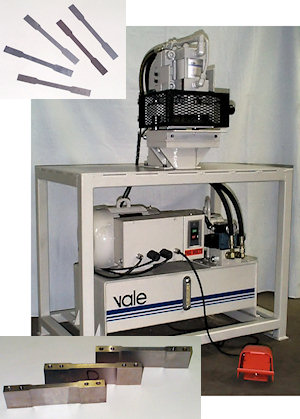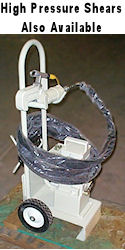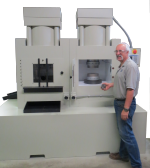Tensile Test Samples Punches
Shearing vs. Milling

When a sample is sheared a series of extremely small cracks are created, similar in size to the natural flaws inherit in the normal crystalline structure of the material itself. However, these very same cracks will appear in any sample that is milled. The reason for this is that the same process is being used to remove metal whether you are shearing or milling. When you shear a sample you are cutting away the metal in one quick stroke. When you mill a sample you are cutting away the same metal, but in a series of strokes. It makes no difference as to the number of strokes you take, you are cutting metal away and you will create the same small cracks. Any machining process involves shearing of the surface.
The good news is that these small cracks have very little or no effect on the test. The cracks are so small in relation to the gross size of the total cross-section that the test really does not see the cracks.
In one aspect, shearing with a Vale press is far superior to milling the sample. When you shear the sample, the sample is created with one massive shear that creates little heat or distortion of the sample. However, when you mill the piece you introduce a lot of heat into the sample and then use coolant in the process to quench the sample. This heating and cooling action can have more negative effect on the reliability of the test than the small, nearly microscopic cracks.
Shearing is the preferred method of creating test samples up to a materiel thickness of 13 mm.
Depending on the size of the sample required and the thickness of the material from which the sample is being sheared, there are several Tensile Test Sample Punches available. For details please refer to catalog 210.



